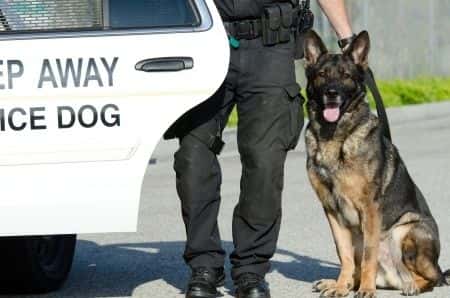A dog bite expert witness opines on a case involving a police dog who bit and held suspect, causing significant injuries. The police were called to a home for a domestic disturbance in which the plaintiff’s wife was seriously injured and required hospitalization. The plaintiff hid in the brush behind his home. Police sent a trained canine to search for the plaintiff. Police located him lying down. The dog was a few feet away. Even though police could see the plaintiff’s hands, he refused to raise them and the dog continued to advance, ultimately biting him in the thigh and upper arm. Police never ordered the dog to stop advancing or stop biting the plaintiff and the dog had to be physically removed from him.
The plaintiff suffered a loss of muscle function and permanent disfigurement to one arm. He had more than $13,000 in medical expenses. The plaintiff filed numerous claims against the officers and their department, including claims for negligence and excessive force.
Question(s) For Expert Witness
1. What standards govern the use of a canine in an arrest?
2. What should officers do in a find-and-bite situation?
3. Was the officers’ action justified?
Expert Witness Response
The primary purpose of using a police dog is to locate persons, places or things. It is a useful tool. However, a dog cannot search a person, apply handcuffs, or analyze facts. When a dog locates a person, it still requires an officer to take the person into custody. When a dog is used as a weapon, it entails a significant chance of serious injury. The use of a dog as a weapon requires analysis under the same use of force standards as other police actions — objective reasonableness and use of force policies.
Because of the risk of injury and the fact that dog handlers sometimes are not in physical control of their dogs, it is important that warnings are given before giving the dog a search command. Warnings are necessary to permit the suspect to give up under the threat of an immediate use of force as well as to make sure non-suspects, including other officers and citizens, are warned of the dog's imminent deployment because the animal cannot differentiate between an intended target and a non-suspect and will bite whomever the animal encounters. In this case, warnings were given, the plaintiff surrendered, yet the officer sent the dog to bite him anyway.
It is my opinion that the dog should not have been permitted to bite the plaintiff because he had been located, was in view, and was submitting to authority. The fact that the plaintiff was bitten in multiple locations, including underarm, upper arm and shoulder, and thigh, is indicative of a prolonged attack. The location of the bites under the plaintiff’s left arm, in addition, to being to being particularly dangerous, show that his arms were up even before the dog reached him.
In this case, my opinion is that the officer’s deployment of the dog was not justified.
The expert is a retired deputy sheriff and canine officer and trainer who has testified as an expert more than 100 times.
About the author
Michael Morgenstern
Michael is Senior Vice President of Marketing at The Expert Institute. Michael oversees every aspect of The Expert Institute’s marketing strategy including SEO, PPC, marketing automation, email marketing, content development, analytics, and branding.



